The following is part 4 of a new series ‘Edgar Poe as Cultural Warrior’ and serves as a sister series to The Occult Tesla. Click here for part 1, here for part 2 and here for part 3.
“We know that the British bear us little but ill will… In letters as in Government, we require a Declaration of Independence— a better thing still would be a Declaration of War”.
-Edgar Poe
Edgar Poe and other patriots representing America’s intelligentsia understood that the ideals of the American revolution could only be achieved if a culture of excellence could be attained such that each citizen could awaken a love of true wisdom in each of their hearts.
This was not an easy prospect as the ideals of personal liberty outlined in the Declaration of Independence and the ideal of ‘the General Welfare’ outlined in the Constitution of 1787 appeared to many to be opposing incompatible principles incapable of co-existing.
However, that high standard of wisdom which involved the harmonization of individual liberty with the wellbeing of the whole society has been a fundamental precondition for any culture that was morally fit to survive. This of course meant that the laws of higher mentation would need to come alive in each citizen- such that educated debate, insight and reason could govern the passions of all members of society.
This was, and still is, the principle battleground of human society, and as Poe understood, it was through the domain of culture that the moral cultivation of the souls of a people was best effected. Inversely, it was also through the domain of culture that the moral destruction of a society would most effectively occur, which Poe’s oligarchist enemies understood very well.
Edgar Poe called out the occult corruption of British intelligence operations into America’s young republican culture and targetted Jeremy Bentham (chief of British intelligence, and pederast) by name in several essays.
In his 1840 Philosophy of Furniture, Poe stated:
“As for those antique floor-cloths still occasionally seen in the dwellings of the rabble — cloths of huge, sprawling, and radiating devises [[devices]], stripe-interspersed, and glorious with all hues, among which no ground is intelligible — these are but the wicked invention of a race of time-servers and money-lovers — children of Baal and worshippers of Mammon — Benthams, who, to spare thought and economize fancy, first cruelly invented the Kaleidoscope, and then established joint-stock companies to twirl it by steam.”
The radical sensualism and associated mysticism of the Transcendentalist writers had formed a vastly influential cult in the USA around the gnostic intellectual Thomas Carlyle (1795-1881) and his American disciple Ralph Waldo Emerson (1803-1882).
Carlyle and Emerson Create a New Science of “Soul”
In 1833, Emerson left the unitarian church and set sail for England to be tutored in the mysteries of transcendentalism by Carlyle, who by that time was in charge of the Edinburgh Review and himself a student of James Mill and Jeremy Bentham (both major controllers of 19th century British intelligence).
Throughout his works, Carlyle advanced a conception of the mind that intentionally dichotomized the emotions from the powers of understanding utilizing the German philosopher Emmanuel Kant as his foundation.
Of course, Carlyle wasn’t so direct in creating this dichotomy of mind vs emotions, and like any magician conducting a trick, knew that he first had to redefine “feelings” as something he called “reason”.
Once this sleight of hand was established, he was then able to state that this new type of emotion-driven “reason” was the only power we needed to access the thing he dubbed “the divine/transcendental”.
IF this were true, then following the logic of Kant, Carlyle concluded that the thing now called “understanding” was merely the deductive/inductive attributes of logic devoid of any creative spark or emotional/aesthetical power. If this were believed un-questioningly, then the pursuit of “understanding” became a hindrance to the pursuit of the thing he called “divine/transcendental”.
In his 1829 essay Novalis, Carlyle wrote that the transcendentalist: "boasts that his Philosophy is Transcendental, that is, 'ascending beyond the senses' . . . To a Transcendentalist, Matter has an existence, but only as a Phenomenon: were we not there, neither would it be there.”
Schiller vs Kant: On Aesthetics and Judgement
The great German poet Friedrich Schiller was so horrified by the implications of Kant’s dichotomization of “reason” from “emotions” that he wrote the beautiful treatise On the Aesthetical Education of Man which outlined the science of harmonizing the sentiments of the heart with the powers of creative reasoning of the healthy mature human mind.
Like Poe, Friedrich Schiller (known as Germany’s “poet of freedom”) also directed his efforts to creating popular stories, plays and poems which would practically serve to educate the emotions and minds of the population.
Schiller and Poe both understood that this quality of creative reason that unites the higher universal sentiments with understanding cannot simply be spoken about formally, but can only be achieved through freedom and hence the performative principle of art itself.
It should also come as no surprise that the man assigned to translate Schiller’s works (and thus control their interpretation) into the english language was none other than Thomas Carlyle.
Carlyle despised Schiller’s belief in the possibility for a culture of self-government and wrote in his 1831 book Sartor Resartus of his ideal state of the happy peasant who should be forever happy simply “being” independent of the injustice shaping his external circumstances. Carlyle writes: “There is in man, something higher than love of Happiness; he can do without happiness, and instead thereof find blessedness!… This is the everlasting ‘yea’, wherein all contradiction is solved: wherein whoso walks and works, it is well with him”.
Outer Beauty for the Ignorant Masses and Inner Ugliness for the Enlightened Elite
This artistic philosophy directly inspired another misanthropic art critic named John Ruskin (1819-1900) who created an occult neo-Platonic school called ‘The Pre-Raphaelite’ society a few years later. Ruskin was a devoted oligarchist who promoted a peculiar brand of political economy dubbed ‘imperial socialism’, which centered around hereditary elites (supported by state funds) managing a world of happy slaves.
Like Schiller and Poe, Ruskin also called for a new aesthetical movement to develop political stability while fulfilling the universal craving of each citizen to express a sense of creativity. However unlike Schiller or Poe, Ruskin believed that this creativity must be governed by a longing for the “authenticity” of ‘decay’. [1]
Describing his ideal art, Ruskin wrote in his 1853 The Stones of Venice: “The greatest treasures of art which Europe at this moment possesses are pieces of old plaster on ruinous brick walls, where the lizards burrow and bask, and which few other living creatures ever approach; and torn sheets of dim canvas, in waste corners of churches; and mildewed stains”
Meanwhile, just as he was promoting an artistic ideal of ugliness for the elite masters of the world, Ruskin was simultaneously launching a new artistic movement for the masses along with reformer William Morris dubbed ‘the arts and crafts movement’. The idea being that plebians also needed to feed something more than their stomachs, and so mini-personal cultures, and art therapy devoid of high excellence or rigorous standards of beauty would be granted to the masses.
Although known for his use of flowery language promoting personal freedom and equality, Emerson’s elitist secret doctrine was maintained throughout his long career, and outlined explicitly in his college diaries where he wrote:
“I believe that nobody now regards the maxim that ‘all men are born equal’ as anything more than a convenient hypothesis or an extravagant declamation. For the reverse is true- that all men are born unequal in personal powers, and in those essential circumstances, of time, parentage, country, fortune. The least knowledgge of natural history of man adds another important particular to these; namely what class of men he belongs to- European, Moor, Tartar, Africa? Because nature has plainly assigned different degrees of intellect to these different races, and the barriers between are insurmountable.”
Emerson continued his racist diatribe stating: “I saw ten, twenty, a hundred large lipped lowbrowed black men in the streets who, except in the mere matter of language, did not exceed the sagacity of the elephant… the African degenerates to a likeness of the beast… are they not an upper order of inferior animals?” [2]
Just like the earlier Hellfire Club of the 18th century, the Transcendentalists were devoted to a public and secret doctrine with a public face promoting “spiritualism”, while the inner elect advanced the revival of the ancient mystery cults, gnosticism and the Eleusinian Mysteries. Emerson would himself write homages to the Eleusinian mysteries, and advanced a philosophy of post-morality writing in his Self-Reliance: “if I am the Devil's child, I will live then from the Devil."
This cult was attacked relentlessly by Edgar Allan Poe throughout many of his polemical writings and satires such as ‘Mellonta Tauta’, ‘Ligeia’, ‘Never Bet the Devil Your Head’, ‘How to Write a Blackwood Article’ and ‘A Predicament’.
In his 1841 short story Never Bet the Devil Your Head, Poe’s character Mr. Dammit is a mystic with a proclivity to over-exaggerate and foolishly bets his head to the devil. Before the devil actually arrives on a bridge in the appearance of an old man (walking under an arch wearing a mason’s apron) to kill the unfortunate Mr. Dammit, Poe’s narrator draws several attacks at Kant and Carlyle by name and says: “It is not impossible that he was affected with the transcendentals. I am not well enough versed, however, in the diagnosis of this disease to speak with decision upon the point.”
When Emerson returned from his 1833 trip to Europe as the official literary agent for Thomas Carlyle, he first established himself in Concord Massachusetts and became a member of a group known as The Social Circle. This group was run by Concord Democratic party controller Francis Gourgas who became close to Emerson. Gourgas’ uncle just so happened to be a man named John James Joseph Gourgas- then head of the northern jurisdiction of the Scottish Rite of Freemasonry which was overseeing a takeover of US masonic lodges at the time.
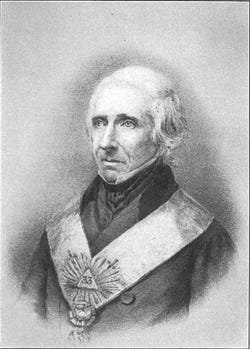
Thus, Poe’s masonic references in Never Bet the Devil Your Head, as well as in the short tale of Ligeia (featuring an initiated fanatic of hidden mysteries who slowly murders his own wife with arsenic-laced wine).
Margaret Fuller’s Enlightenment
“Humanity Is Divided Into Men, Women, And Margaret Fuller”
-Edgar Allan Poe
In How to Write a Blackwood Article and A Predicament, Poe mocked the figure of Margaret Fuller- another disciple of Carlyle and Emerson who became one of the most famous Transcendentalists in the 1840s.
In both short stories, Poe hilariously parodied Fuller through the character Suky Snobbs (aka: Psyche Zenobia)- an arrogant Blackwoods Magazine writer who takes herself far too seriously and is devoted to radical mysticism and sensualism. Poe has Suky introduce herself hilariously:
“I PRESUME every body [[everybody]] has heard of me. My name is the Signora Psyche Zenobia. This I know to be a fact. No body [[Nobody]] but my enemies ever calls me Suky Snobbs. I have been assured that Suky is but a vulgar corruption of Psyche, which is good Greek, and means ‘the soul’ (that's me, I’m all soul) and sometimes ‘a butterfly’…”
While laying out the guidelines for writing a ‘spiritual’ article for Blackwoods, Snobbs writes:
“If you know any big words this is your chance for them. Talk of the Ionic and Eleatic schools — of Archytas, Gorgias, and Alcmæon. Say something about objectivity and subjectivity. Be sure and abuse a man named Locke. Turn up your nose at things in general, and when you let slip anything a little too absurd, you need not be at the trouble of scratching it out, but just add a foot-note, and say that you are indebted for the above profound observation to the ‘Kritik der reinem Vernunft,’ or to the ‘Metaphysische Anfangsgrunde der Naturwissenchaft.’ This would look erudite and — and — and frank.”
In ‘A Predicament’, Snobb’s devotion to radical sensualism resulted in her trying to describe each sensation of her head getting cut off by the arms of a massive clock and then philosophizing whether her spirit existed in her severed head or body. [3]
In her 1841 Transcendentalist Manifesto, Margaret Fuller lived up to Poe’s satire by repeatedly speaking self-referentially of her own enlightenment and re-emphasized Carlyle’s thesis that intellect was incompatible with “Divine Understanding” saying: “The intellect has no answer to this question, yet as we through faith and purity of deed enter into the nature of the Divine it is answered from our own experience. We understand, though we cannot explain the mystery of something gained where all already is.”
The Transcentalist-Mazzini Connection
In an 1847 article to The Tribune, Margaret Fuller described her London meetings with both Italian revolutionary Giuseppe Mazzini and Sir Thomas Carlyle. Mazzini was the founder of the Young Europe Movement which recruited a young Friedrich Engels to its cause during the 1840s. [4]
Although celebrated as a ‘republican revolutionary’ cut from a similar cloth as the American war hero General Marquis Lafayette, Giussepe Mazzini was a very different type of creature and was affiliated throughout his life with the highest echelons of the British Empire, and the occult underground.
After being expelled from Italy in 1834, Mazzini found himself in Bern, Switzerland, where he established ‘The Young Europe’ movement which was designed to capture the revolutionary energy that Lafayette had carefully awoken across Europe between 1826-1834 and re-direct it towards terrorism, regime change and world government.
As we saw in part one of this series, Lafayette’s efforts to correct the tragedy of 1789 by establishing a full republic in France failed in 1830 when he gave into pressure to support a “constitutional monarchy” under the traitorous King Louis-Philippe.
Mazzini’s “republicanism” was not the republicanism promoted by Lafayette or Benjamin Franklin but was more akin to the republicanism of Venice. This republicanism would permit a limited bottom up “democracy” for the peasants who would never come close to any actual influence over the top down controls of their society… as this would be reserved for an elite priesthood.
Working closely with Garibaldi’s army, Mazzini became dictator of Italy leading a short-lived three person Triumvirate between February to July 1849, and when that came undone, he escaped to live out his days in Switzerland and England coordinating global revolution through his Young Europe movement. It is here worth noting that Margaret Fuller was in Rome working closely with Mazzini during his six month dictatorship, and escaped to Florence when he was overthrown by French and papal forces.
Noting Fuller’s involvement with Mazzini’s Young America group in New York, researcher William Bond writes: “Fuller had probably first heard of Mazzini during her brief association, in the late 1830s in New York, with the ‘Young America’ movement, a cultural revolutionary group, modelling themselves after Mazzini’s ‘Young Italy’.”
In a 1972 essay for American Heritage, Joseph Jay Deiss noted Fuller’s devotion to Carlyle in England and writes of her relationship with Mazzini:
“Margaret for her part was swept entirely into his orbit. She found him “pure music.” She wrote an article for the Tribune about Mazzini and his goals, reminding Americans that Italy was “the mother of our language and our laws, our greatest benefactress.” Unaware of potential dangers, she joined a plot to smuggle Mazzini back into Italy as a member of the Springs’ party—with an American passport. So secret was the scheme that past biographers generally have been unaware of it. The plan called for Mazzini to make contact with the Americans later in Paris, in disguise.”
But what does Mazzini, an Italian freemason and revolutionary have to do with Margaret Fuller?
The historian Allan Salisbury has the following to say in answer to this question:
“During her stay with Thomas Carlyle in England, Fuller, under Carlyle's direction, had secretly supplied the Italian terrorist Giuseppe Mazzini with an American passport and escorted him through France and safely into Italy. Mazzini was the head of Young Italy, a creation of the same Edinburgh SIS and Venetian oligarchist networks that created Young America, Young France, etc. as post-Jacobin battering rams against the surviving republican currents in those countries.”
Emerson’s Young America (Northern Branch)
Recall that while Margaret Fuller was running to the support of her hero Giuseppe Mazzini, Ralph Waldo Emerson- an acolyte of both Mazzini and Carlyle was simultaneously launching a Young America movement in the northern states of the USA!
By appealing to the sense of radical individualism, Emerson’s ‘Young America’ asserted that the idea of the General Welfare outlined in America’s constitution was in total opposition to the freedom of the individual- thus severing the sacred bond connecting the citizen with the nation state.
This line of thinking which targetted the US constitution itself was outlined in Emerson’s Young America 1844 manifesto:
“At this moment, the terror of old people and of vicious people is that the Union of these states be destroyed; as if the union had any real basis than the good pleasure of a majority of its citizens to be united. But the WISE and JUST man will always feel that he stands on his own feet; that he imparts strength to the state, not receives security from it, and if all went down, he and such as he would quite easily combine in a new and better constitution.”
As historian Anton Chaitkin demonstrated in his 1984 masterpiece Treason in America, Emerson’s transcendentalists received vast patronage from the leading American Brahmin families operating through the Northern Branch of the Scottish Rite whose fortunes were made overseeing the growth of City of London directed financial network of Wall Street and the illicit opium trade alongside the British East India Company.
These same followers of Emerson fought viciously to keep the USA from fighting the slave power during the Civil War arguing it better to dissolve the union and simply construct two pro-British confederacies with one embracing African slavery and the other rejecting it.
Describing the support which leading transcendalists gave to the terrorist-reactionary program of John Brown (whose mass shooting at Harper’s Ferry in 1859 was a vital spark plug of the Civil War), Chaitkin writes:
“Back in Boston, Brown met with Transcendentalist author Ralph Waldo Emerson. A Young America supporter, Emerson praised Brown as ‘a true idealist with no ends of his own’, and gushed: ‘a shepherd and herdsman, he learned the manners of animals and knew the secret signals by which animals communicate.’ Brown also met with nature-loving writer Henry David Thoreau. A sometimes family employee of Swiss grand master of the Scottish Rite, J. J. J. Gourgas, Thoreau called Brown a man of ‘rare common sense’. Both authors gave Brown money.” [Treason in America, p. 229]
Pike’s Young America… Southern Branch
Just as the Northern Branch of Mazzini’s Young America was launching terrorist operations against the south, the Southern Branch of the Young America Movement was preparing its own plans to shred the republic apart. This southern branch was headed by Giuseppe Mazzini’s pro-Slave agents Albert Pike, Judah Benjamin, Colonel George Saunders and other leaders of the Confederacy.
These agents of Mazzini arose to power during the administration of Franklin Pierce (1853-1857), and used their influence to empower the slave system while also establishing a vast paramilitary group in the USA dubbed the Knights of the Golden Circle (f. 1854). This secret brotherhood would come to number over 100,000 men by the start of the Civil War.
The Knights of the Golden Circle would have as its objectives: 1) the secession of slave states into a new confederation, 2) the establishment of a vast slave empire with a headquarters based in Cuba, 3) a special relationship with England, and 4) the creation of a new constitution designed around unlimited free trade, legally banning the liberation of any slave for perpetuity, and the legal banning of any national banking procedures.
Historian Andrew Laverdiere wrote of Mazzini’s dual involvement with both the northern and southern agents of London prior to, and during the Civil War:
“A masonic group in the United States was gearing up to support the pro-slavery Franklin Pierce for President in 1852; they were the radical wing of the Democratic Party, and they called themselves Young America. Mazzini’s American contacts were either proto-Confederates or fanatical abolitionists, such as William Lloyd Garrison. During the American Civil War, Mazzini favored both the abolition of slavery and the destruction of the Union through secessionism-the London line. In the future there was created The Young Turks. And yes, there was also a Palmerston-Mazzini group for Jews, sometimes called Young Israel, and sometimes called B‘nai B’rith.”

George Sanders was an active member of the Knights of the Golden Circle and played a leading role controlling confederate intelligence operations in British Canada during the Civil War where he stage managed an expendible dupe named John Wilkes Booth. Sanders was the Ambassador to England under the presidency of Franklin Pierce (1853-1857), and was a close friend of Giuseppe Mazzini – with whom he hosted numerous salons while in London.
Sanders who wrote a pamphlet “Mazzini and Young Europe” in 1852, had the honor of being a leading member of the southern branch of the Young America Movement. Fellow Knight of the Golden Circle, Jacob Thompson, was a former Secretary of the Interior under President Pierce, handler of John Wilkes Booth and acted as the top controller of the Confederate secret service in Montreal.
Confederate spymaster Judah Benjamin (Secretary of State under Jefferson Davis) escaped arrest and lived out his days as a Barrister in England, and Confederate President Jefferson Davies speaking to adoring fans in Quebec in June 1867 encouraged the people to reject the spread of republicanism and instead embrace the new British Confederation scheme that would soon be imposed weeks later. Davies spoke to the Canadian band performing Dixie at the Royal Theater: “I hope that you will hold fast to their British principles and that you may ever strive to cultivate close and affectionate connections with the mother country”.
With the loss of Lincoln, and the 1868 death of Thaddeus Stevens, Confederate General Albert Pike led in the agenda to restore the southern oligarchy and sabotage Lincoln’s planned industrial reconstruction of the South with the rise of the KKK, and renewal of Southern Rite Freemasonry. These agencies would interface closely with both leading members of the estoteric section of the Theosophists as well as the American branch of the Hermetic Order of the Golden Dawn - founded in 1887.
Tune in next week for the next installment of this series: Poe's Eureka vs Emerson's Transcendentalism
Footnotes
[1] Ruskin writes in his 1853 Stones of Venice “The most precious works of any noble painter are usually those which have been done quickly, and in the heat of the first thought… Works thus executed are of course despised, on account of their quantity, as well as their frequent slightness, in the places where they exist; and they are too large to be portable, and too vast and comprehensive to be read on the spot, in the hasty temper of the present age. They are, therefore, almost universally neglected, whitewashed by custodes, shot at by soldiers, suffered to drop from the walls, piecemeal in powder and rags by society in general; but, which is an advantage more than counterbalancing all this evil, they are not often "restored." What is left of them, however fragmentary, however ruinous, however obscured and defiled, is almost always the real thing; there are no fresh readings: and therefore the greatest treasures of art which Europe at this moment possesses are pieces of old plaster on ruinous brick walls, where the lizards burrow and bask, and which few other living creatures ever approach; and torn sheets of dim canvas, in waste corners of churches; and mildewed stains”
[2] Emerson in His Journals, Harvard University Press, Cambridge, Mass., 1980. p. 19-22
[3] Blackwoods Magazine was an Edinburg review founded by William Blackwood in the early 19th century that had penetrated America’s cultural life. In Poe’s lifetime, Blackwoods had become a transcendentalist propaganda outlet and promoter of mysticism, and mindless romanticism in America. The demonstration of Margaret Fuller as the character of Suky Snobbs in Poe’s tale was demonstrated by Thomas H. McNeal’s “Poe’s ‘Zenobia ’: An Early Satire on Margaret Fuller,” Modern Language Quarterly, XI (June 1950), 205-216
[4] This story is detailed in Andrew Laverdiere’s The British Empire Returns To A 168 Year Crime-a Scene, Canadian Patriot Review, Nov. 2023 ]
Appendix: A Higher Transcendentalism with Poe’s Poetic Principle
Rather than simply lean on the meaningless view of mindless mysticism as a guide to the transcendental, Edgar Poe evoked the same insight that had earlier been struck upon by the earlier poets Percy Bysshe Shelley and Friedrich Schiller, when he wrote his essay The Poetic Principle in 1848.
In this essay, Poe locates the conjunction of the infinite and the finite, and the yearning of the part for the eternal whole guided by the trifold principle of Truth (reason), Beauty (aesthetical) and Goodness (moral):
An immortal instinct, deep within the spirit of man, is thus, plainly, a sense of the Beautiful. This it is which administers to his delight in the manifold forms, and sounds, and odors, and sentiments, amid which he exists. And just as the lily is repeated in the lake, or the eyes of Amaryllis in the mirror, so is the mere oral or written repetition of these forms, and sounds, and colors, and odors, and sentiments, a duplicate source of delight. But this mere repetition is not poetry. He who shall simply sing, with however glowing enthusiasm, or with however vivid a truth of description, of the sights, and sounds, and odors, and colors, and sentiments, which greet him in common with all mankind—he, I say, has yet failed to prove his divine title. There is still a something in the distance which he has been unable to attain. We have still a thirst unquenchable, to allay which he has not shown us the crystal springs. This thirst belongs to the immortality of Man. It is the desire of the moth for the star. It is no mere appreciation of the Beauty before us, but a wild effort to reach the Beauty above. Inspired by an ecstatic prescience of the glories beyond the grave, we struggle, by multiform combinations among the things and thoughts of Time, to attain a portion of that Loveliness whose very elements, perhaps, appertain to eternity alone.




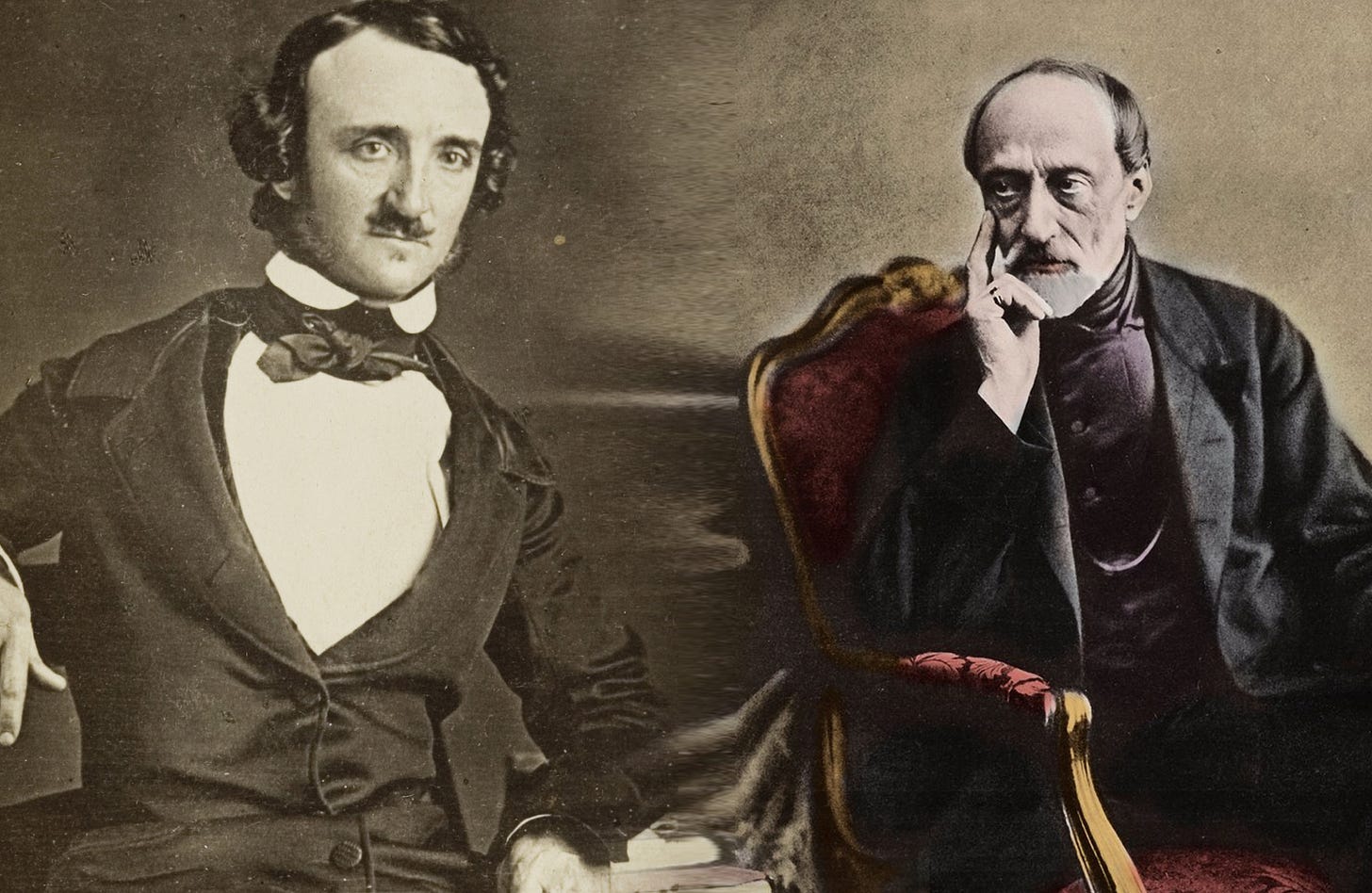
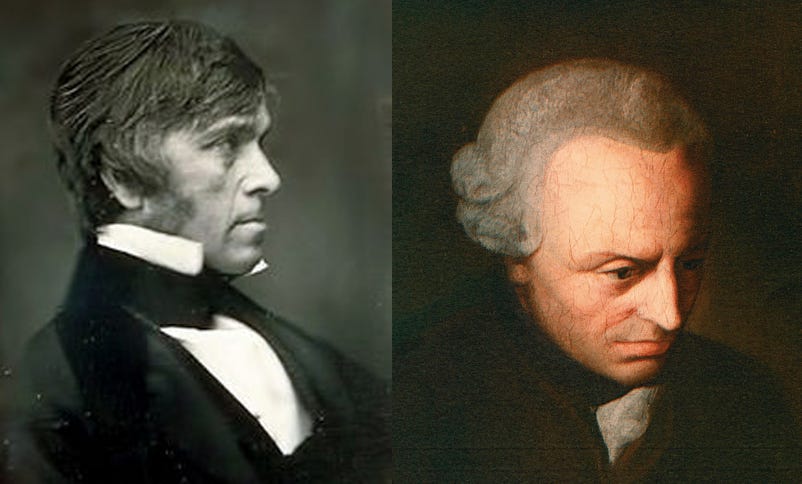
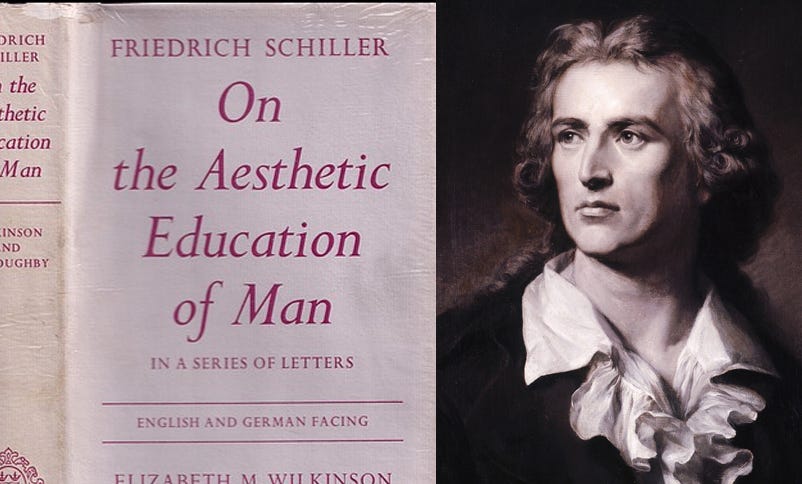
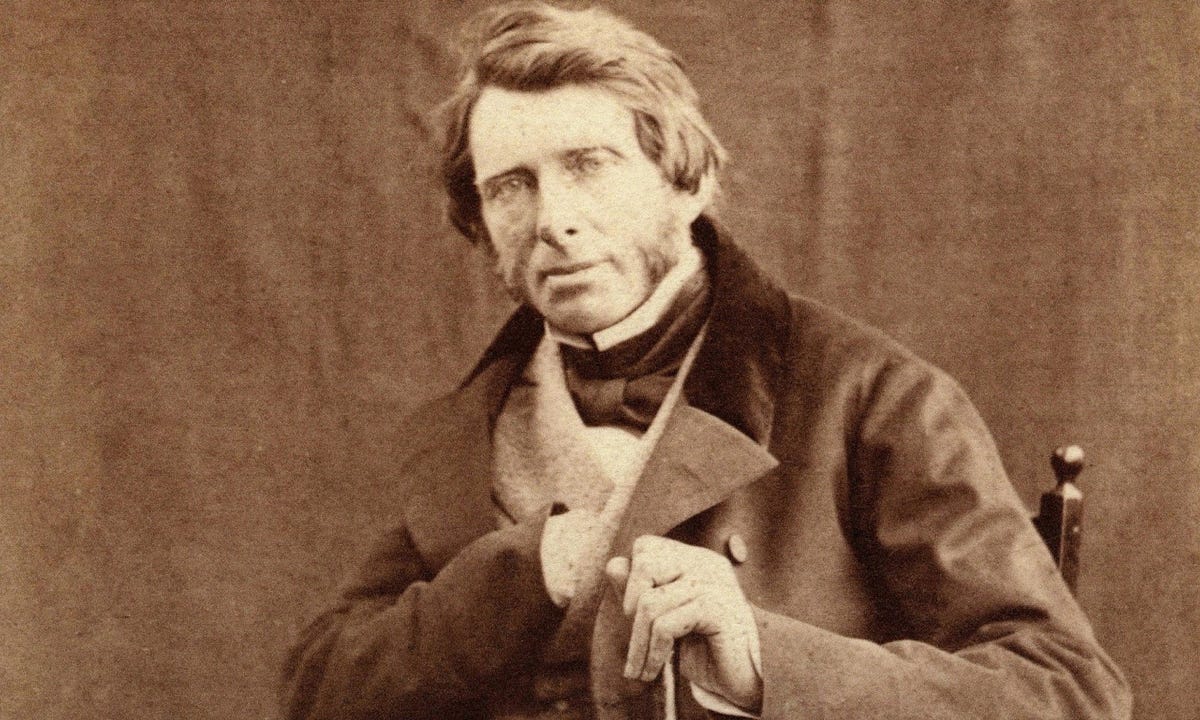
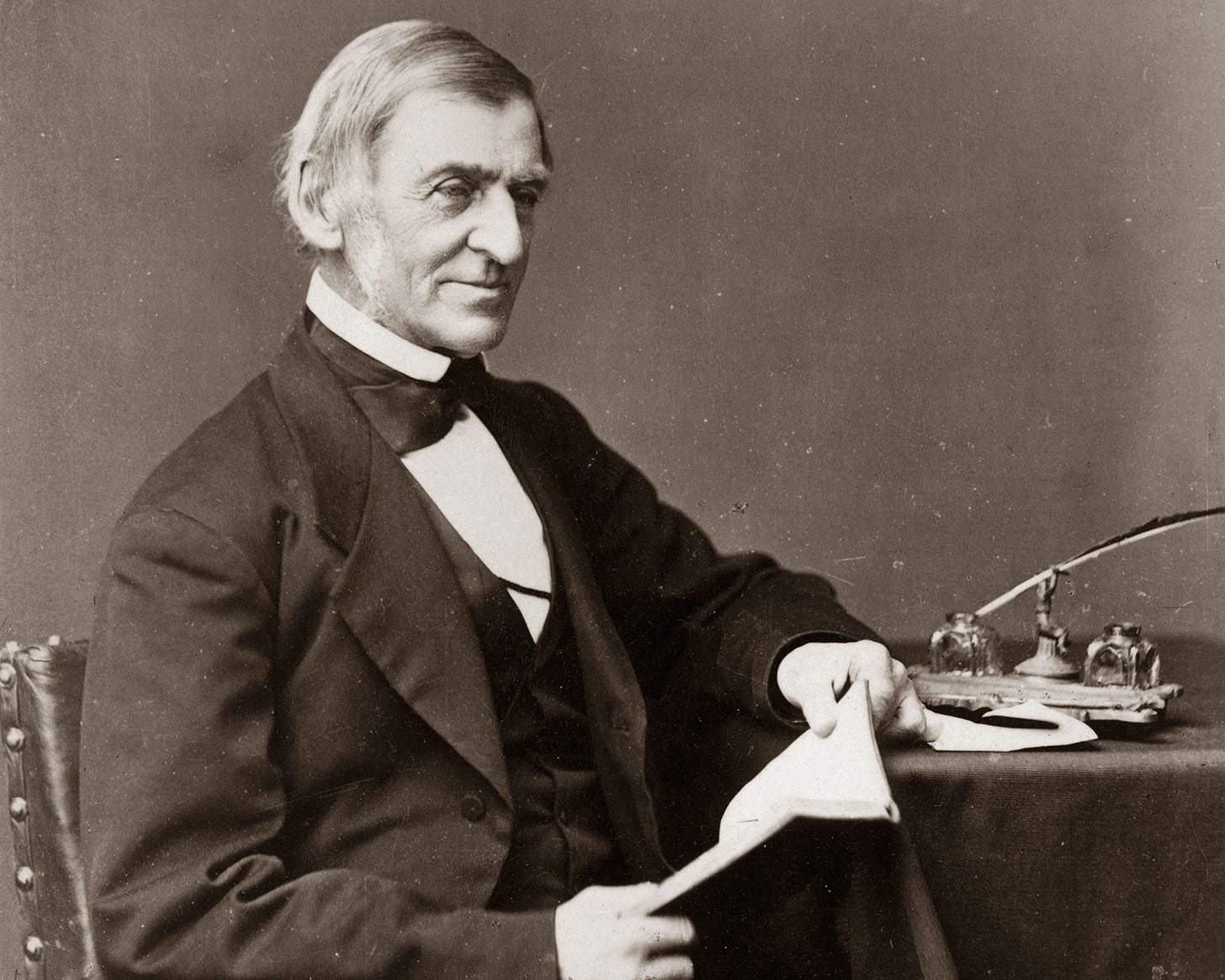
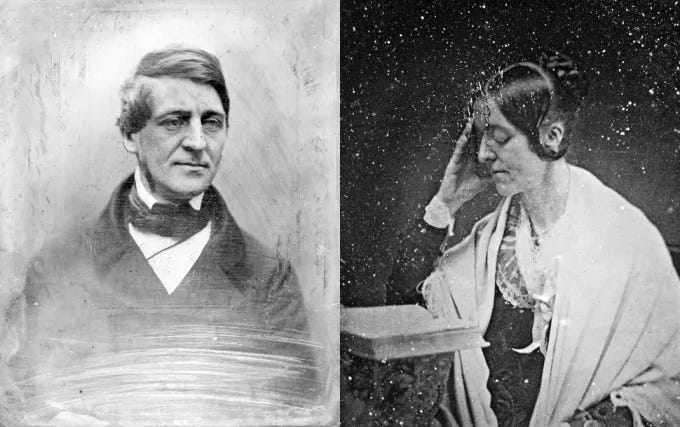
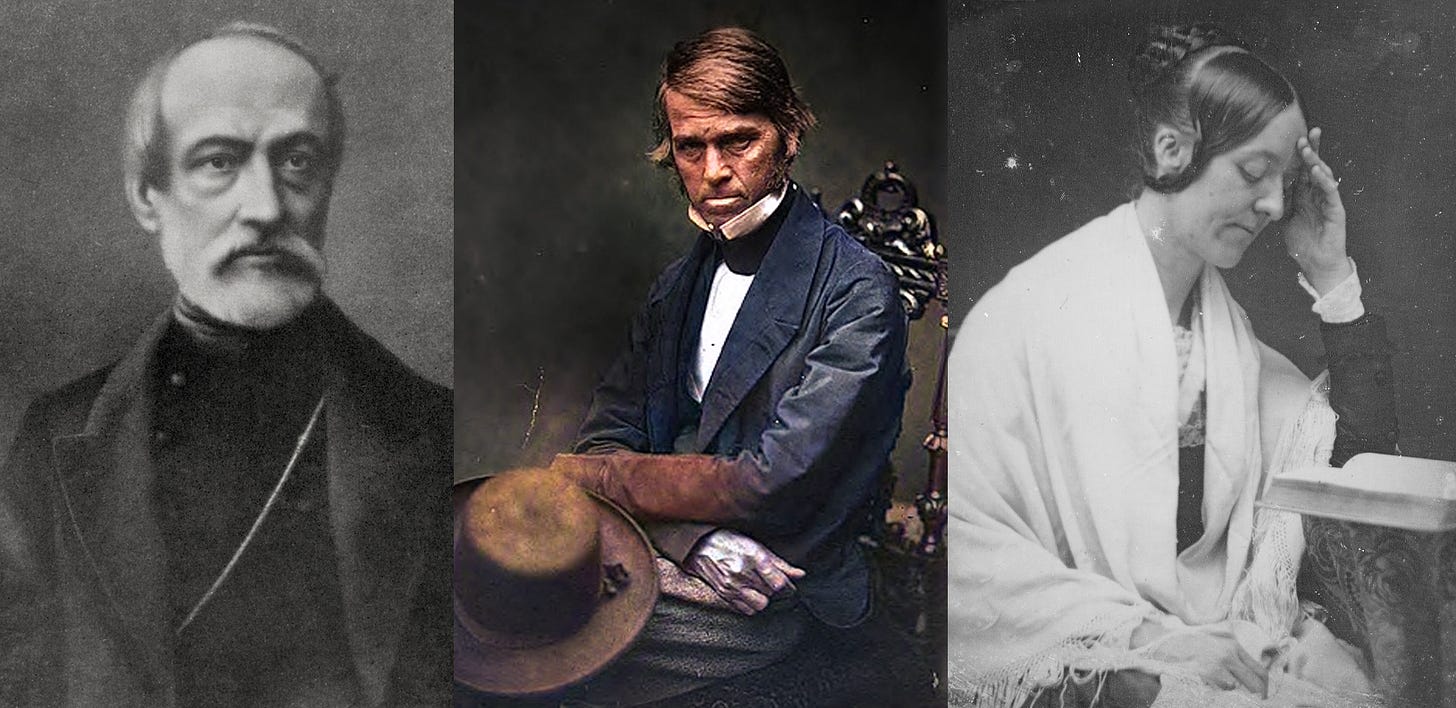

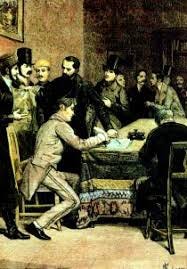
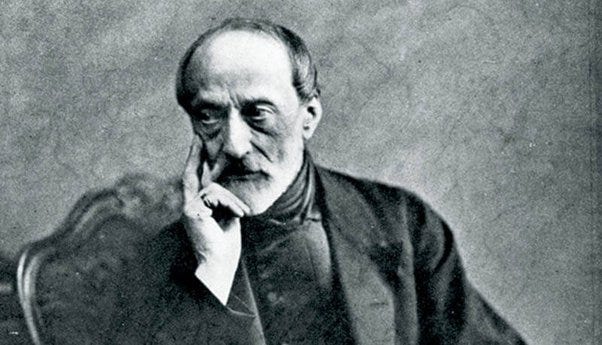
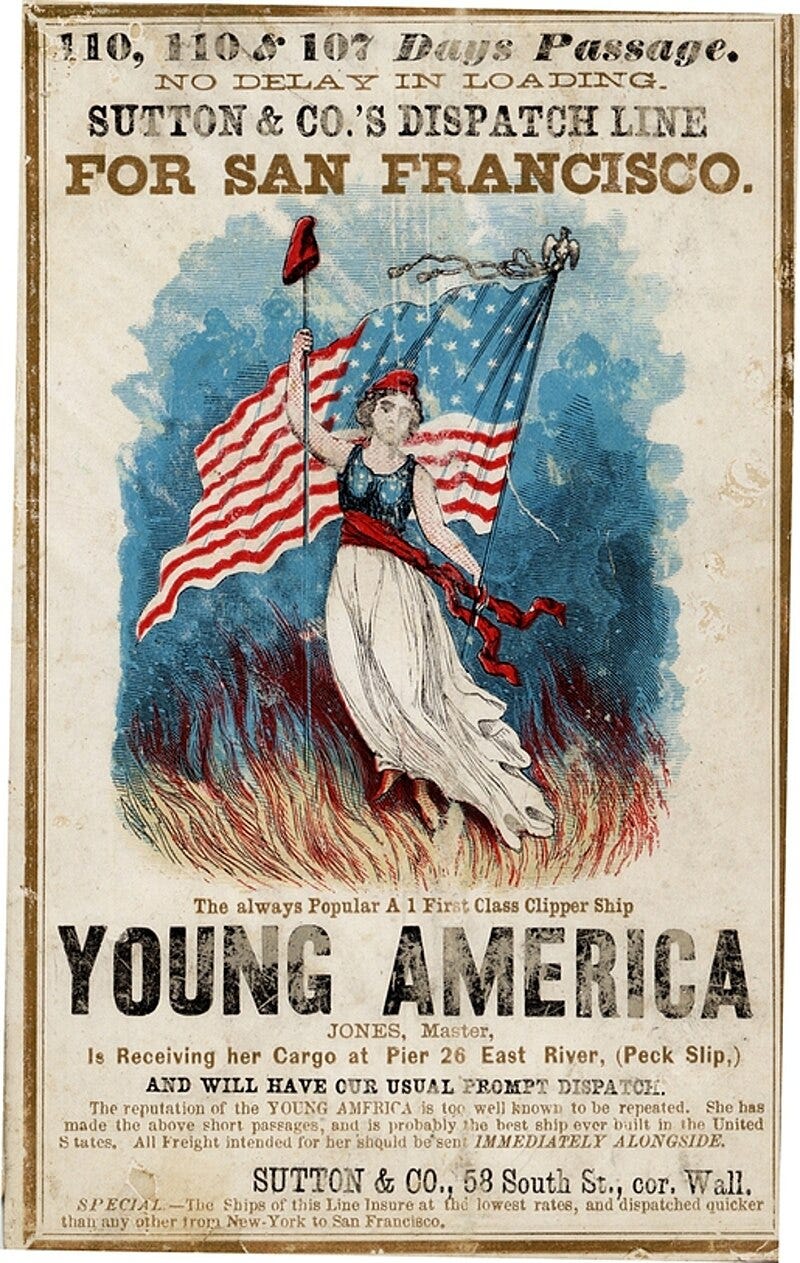

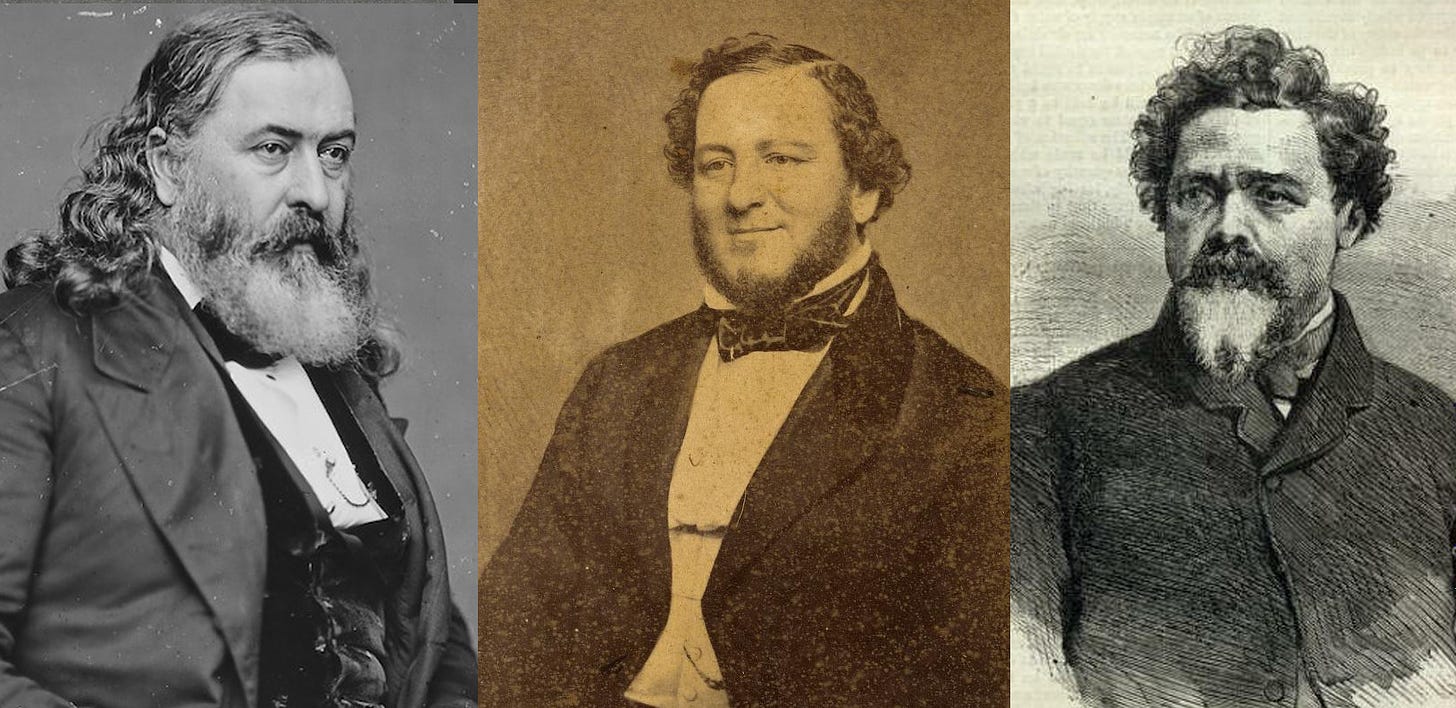
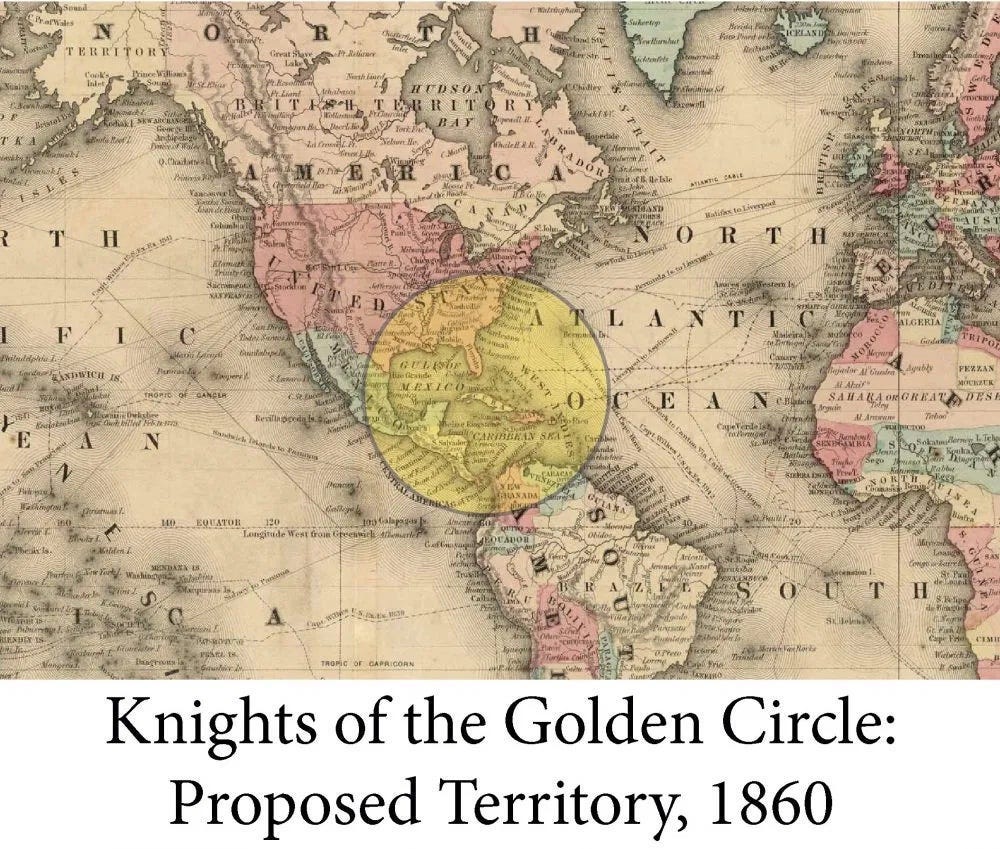
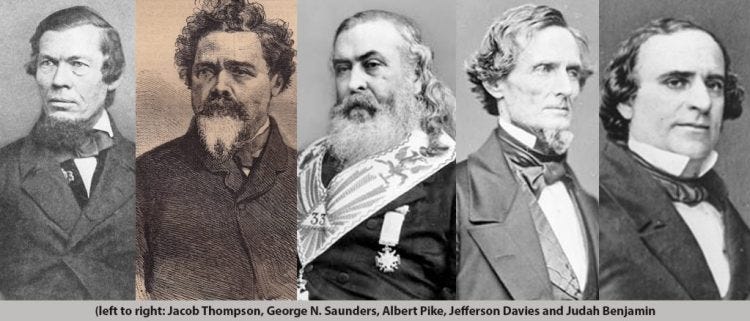




yet another inspiring article, big TQ! Ruskin's pessimist views on previous (European 'classical') art seem to get undone by some of the brilliant works of the pre-Raphaelite Brotherhood (pre-Raphaelites), a group of artists he seems to have supported - https://artuk.org/discover/stories/who-were-the-pre-raphaelite-brotherhood